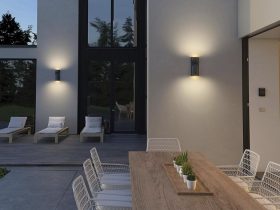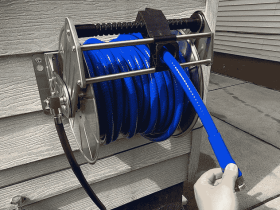Making your home more welcoming to seniors is a terrific approach to ease the movement of your aging parents into your family. A parent’s ability to function independently declines with age, and they may require more help than they’ve ever had before. Making even minor adjustments to your home might alleviate stress during this change. Let’s talk about some ways you can make your house more welcoming to your elderly parents on a budget.
1. Ensure Safe Lifting and Transporting
Lifting and moving loved ones gets more challenging as they get older. Because of the potential for harm, you should avoid doing this. Fortunately, certain methods can make this procedure less complicated and risky.
Lifting and transferring older adults might be difficult, but stairlifts can help. A transfer belt can be a lifesaver when transferring an older adult from a chair or bed. Purchasing Hoyer lifts is also a viable option. Stairlifts can get pretty expensive, so a good option would be looking for used stairlifts.
In addition to the aforementioned hoisting equipment, a safe passageway between rooms is also recommended. In addition to reducing the risk of injury from falls, this will also make it simpler to transport your elderly parent from one room to another. Ensure the floor is clear so your parents can easily use a mobility scooter. In heavy foot traffic areas, place non-slip mats.
2. Avoid Slip-Ups
Every year, one in four people aged 65 and up will suffer a fall, according to data compiled by the Centers for Disease Control and Prevention (CDC). Injury and death among the elderly are primarily due to falls.
However, with only a few adjustments, falls can often be avoided. The installation of safety features like grab bars in the bathroom and handrails on the stairwell can reduce the likelihood of injuries from falls.
Maintaining your elderly parent’s physical and mental health by encouraging them to be active and involved is a great way to reduce the risk of them falling. Exercising might lessen the likelihood of falls by enhancing balance and strength. Make it a point to get your elderly parents involved in things they enjoy doing.
3. Update the Bathroom
Adjust the layout of your bathroom to make it more senior-friendly. Putting in grab bars and a shower bench are only two examples. When planning your bathroom’s layout and fittings, you need to think about people with disabilities.
To make your bathroom more suitable for the elderly, you can redesign it entirely if you have the funds. Among these modifications are making entrances wider, installing levered handles, and setting up a walk-in shower or bathtub.
4. Guarantee Safe Access to Food and Water

Make sure nothing in the kitchen is a tripping hazard and put your parents’ necessities within easy reach. Ensure your elderly parent can access all their belongings, even those in upper cabinets. Using a ramp or stair lift can further facilitate their mobility and independence.
It’s also important to consider the nutritional needs of your parents. The body requires different sorts of food at various stages of life. Verify that your parents are getting the proper nutrition they require.
Furthermore, maintaining a healthy water intake is crucial as we become older. Ensure your parents have access to clean water by setting up a water filtration system in their room. The addition of a water dispenser to their house is also welcome.
5. Decorate the Bedroom to Make it More Welcoming
Your parents’ bedroom should be a peaceful haven where they can unwind and get a shut-eye. To prevent glare from entering the room, hang blackout drapes or blinds. You should also consider purchasing a high-quality mattress and linens.
Consider the room’s furnishings as well. Do your parents have a hard time getting into and out of bed? Is the person able to get to the nightstand? In that case, you might consider rearranging the room or replacing some of the furniture with new options that are easier to use for the elderly.
Invest in a chair for your parent’s bedroom if they frequently doze off in one. This will allow them to sleep in whatever position is most conducive to their comfort. If your parents have a multi-story house, you may also want to consider installing a stairlift or elevator, so they don’t have to worry about climbing the stairs.
6. Stable Lighting is Important
If you don’t have enough light, you should put in more lights or brighter bulbs. The corridor and the bathroom could use a nightlight. Your parents should be able to check it out in the middle of the night.
Have your parents open the windows and blinds during the day, so there is plenty of natural light. They’ll have a better sense of being awake and aware as a result.
7. Have an Emergency Kit Ready
It is recommended to keep a senior emergency kit on hand. Include things like a first-aid kit, prescription drugs, and a list of people to call in case of an emergency. A flashlight and batteries wouldn’t hurt. Don’t hide the kit in a drawer or closet where it won’t be discovered.
If your parents ever have an emergency, they should have your number and contact info ready to dial. Think about designing a “safe area” in your house as well. In a medical crisis, your parents can use this room. The room must have a working telephone and a lock on the door.
Conclusion
Making your house more senior-friendly doesn’t have to be a major undertaking. It’s easy to make your senior loved ones feel at home and secure in their new surroundings with just a few adjustments. To ensure that your home is safe and that everyone can go about their daily lives without incident, you should investigate and make some adjustments.











Leave a Review